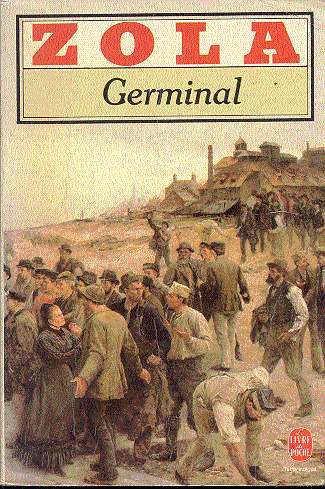Occasionally, June will comment on classic literature,
offering read alikes for teen readers who have an interest in a subject, but
perhaps neither the time nor the stamina for a 600 page tome, and ideas for instructional use by librarians and teachers.
I am currently reading several pre-pub titles and hope to have reviews out for those soon.
First a little background:
Emile Zola was a French novelist during the late nineteenth century and
is credited with founding the naturalist school of fiction writing. His contemporaries, and indeed friends,
included Flaubert, Balzac, and Stendhal.
Zola attempted to apply the methods of natural science to fiction
writing to make it more realistic. As a
result, he was sometimes censured for his somewhat graphic depictions of sex
and some of his plotlines contain characters who are less than savory. I would not recommend Zola to young students
for these reasons as well as the mature themes and generally depressing tone
that pervades some of his work.
Having gotten the disclaimer out of the way, a little about
Germinal. There are passages in this
book that rival Flaubert for beauty.
When Zola describes the mine as an organic being that is chewing up the
lives of the miners, it is not cheesy and the reader wants to reread it
again—this one did anyway. The main
character, Etienne, is on the road, having lost his job. He approaches the mining town of Monstsou,
where he meets various members of the downtrodden proletariat and proceeds to
become a Socialist, leading the miners on an ill-fated strike, in which there
are no winners—only losers. The
descriptions of the starving workers, especially children are not for the faint
of heart, but the value here is the beauty of some of the writing and the
realistic depiction of the working classes, warts and all. Zola has been called the Dickens of France,
and having read this novel, I can see why.
The suffering of the miners and the families is beyond understanding,
but Zola makes us understand. There is
also a possible discussion of Etienne’s socialist “conversion” and what it
really means to him. He wants to help
the workers, but Zola is honest about what Etienne is gaining—popular acclaim,
respect, even money are his through his association with the socialists. At the end, when the miners are back down in
the mine having gained nothing for their efforts, Etienne is on his way to
become a part of the socialist machinery—his lot in life has actually improved.
June Cleaver’s Rating:
Language—PG13; Nudity—R; Sexual Content—R; GLBT content—G; Violence—R;
Substance Use and Abuse—PG mostly drinking;
Overall Rating—R
Robin's Comments:
Read-alikes for teens:
It’s not a perfect match, but The Uglies series by Scott Westerfeld
explores similar themes of the haves v. the have nots and the exploitation of
people by a higher authority or with government complicity.
Teaching Ideas: Pair
excerpts (as I stated earlier—I would NOT recommend the entire novel for
various reasons) with readings from Upton Sinclair’s The Jungle or Steinbeck’s
The Grapes of Wrath for comparison in description and presentation of the
working man’s lot. The Grapes of Wrath
has passages personifying the dust bowl, much as Zola does the mine. There are gross passages in The Jungle about
the meat packing industry that can be well matched with some of Zola’s writing
about the mine or the workers.

No comments:
Post a Comment